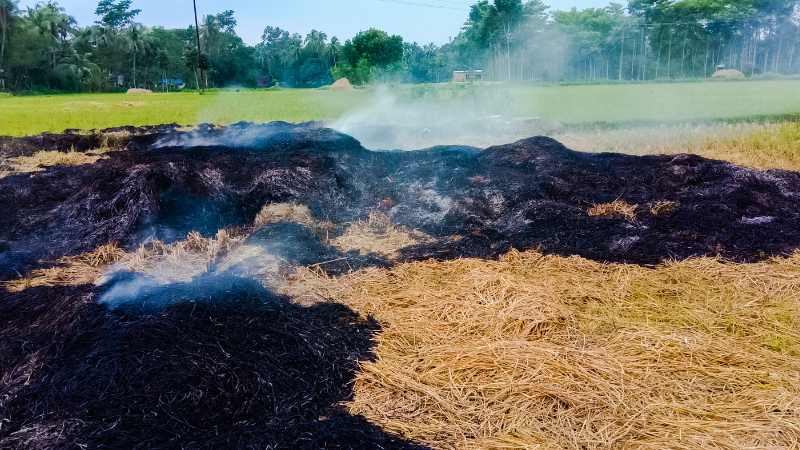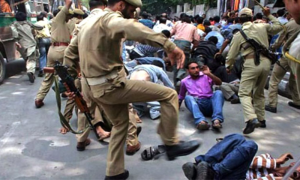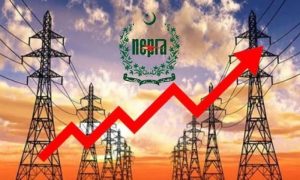Smoke Emission Lahore: Burning of crops’ remains and smoke emitted by the vehicles and mills coupled with improper management by the provincial government, has left millions of residents of Punjab province in trouble.
Smog and Lahore: Air pollution and smog lead to significant environmental issues
Smog — a mixture of air pollutants — engulfs vast tracts of the province, and Lahore city remains the worst hit by the phenomenon due to the excessive number of vehicles plying on its roads.
Other cities of the province also face the same trouble. Every year from November to March, people become exposed to serious environmental degradation and face serious health hazards.
The provincial authorities claim to be doing the utmost during this season as they count several measures to check pollution. Yet, in many parts of the province, open burning of residue can be seen. The action can be considered as a mockery of the relevant laws without fear of any action.
It seems the province lacks a proper law enforcement mechanism, especially on the subject. “One can see farmers burning residue without any fear while entering Lahore through M-2 and M-3, said Rashid Mahmood, who visited the city last week.
“As soon as one crosses Sukheki on M-2 towards Lahore, he will have to wade through a thick cloud of smoke caused by burning of residue. The same is the situation just 20 kilometers away from Lahore towards Multan and up to Jaranwala interchange on the M-3 motorway. It becomes even harder to breathe while traveling in the area,” he added.
According to Mahmood, concerned officials are not performing their duty properly. He demanded strict government action against such violators who pose a threat to human health.
The phenomenon of air pollution and smog leads to significant environmental and health losses while exposing citizens to diseases like bronchitis, asthma, cough, and allergy.
Exposure to Smog even Aggravates the Risk level among the Masses

According to medical experts, exposure to smog even aggravates the risk level much more than ordinary pollution, stated environmentalist Dr. Mehmood Khalid Qamar. It is to be here that on November 8, Lahore experienced a high level of smog, with the Air Quality Index touching 400 points.
Dr. Qamar blamed poor law enforcement for this nuisance. He believed that burning residue, fuel sources in traditional brick kilns and factories, and the urban transport systems are the main reasons for smog.
Dr. Kashif Saleem, at Mayo Hospital, was of the view that the polluted environment, especially thick smog, contributes to increased morbidity at cardiovascular and respiratory levels – premature mortality and sometimes cancer.
“This phenomenon can lead to diseases such as coughing, asthma, emphysema, chronic bronchitis, allergies, lung infections, irritation in eyes, nose, throat, and chest infections,” the senior dermatologist warned.
The burning of crop residue on the site has also become a grave challenge for efforts to counter climate change. Burning crops’ residue in the very outskirts of Lahore metropolitan adds to the already polluted environment.
A joint action plan to tackle the issue of smog: Officials
Spokesperson Punjab Government Musarrat Jamshed Cheema also acknowledged that the burning of rice crop residue and solid waste in the open and industrial emissions are the main causes of smog. She, however, claimed having introduced modern Rice Straw Shredder and Happy Seeder technology in Sheikhupura, the outskirts of Lahore, and some other districts of the province.
She termed the initiative a multi-billion rupees project being jointly run by Punjab and the federal government. She hoped that the initiative would help avoid burning paddy crop residue and convert it into organic fertilizer.
Commenting on the situation, Secretary Environment Protection Department Punjab, Usman Ali Khan, said that the provincial government departments have been working in close collaboration to implement a joint action plan to tackle this issue.
Read Also: Promoting Tourism: Punjab’s Biggest Winter Family Festival to Begin on Thursday
He said as many as four special squads of EPD were operational in Lahore and four other cities, including the field teams. He said that from August 27 till November 8, strict action had been taken against 69 illegal operators in the province. He said action against 1252 industries working without emission control systems was also taken in recent months.
Similar action was also taken against 314 traditional brick kilns. The authorities also sealed 192 brick kilns and imposed an Rs 11 million fine on them collectively. It is to mention here that no brick kiln is allowed to operate without a Zig-Zag technology and blower,” he said.
Although the government is taking certain measures yet, what is missing on the ground is the implementation of environmental laws.
























